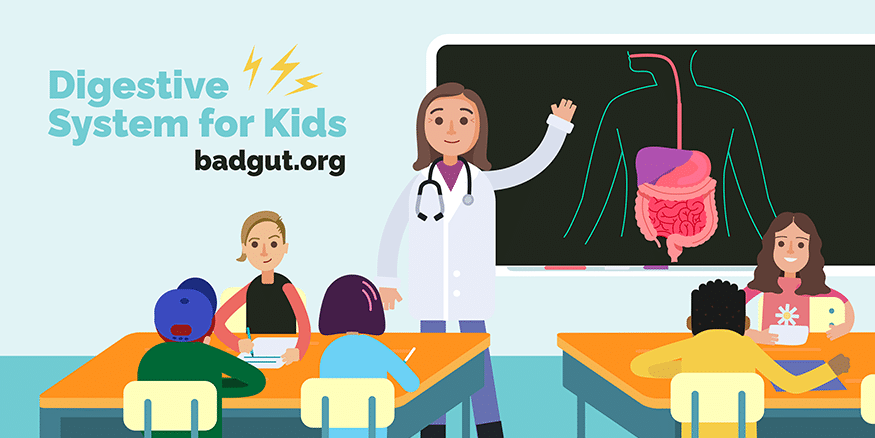Doctor: I’m Dr. Lara Hart, a gastroenterologist, which means I specialize in the digestive tract. Do you have any questions?
Girl: Doctor, people say that we are what we eat. Is that true?
Doctor: It’s kind of true. When you eat food, your digestive system breaks it down into tiny parts, known as nutrients. Vitamins, minerals, fats, proteins, and carbohydrates are types of nutrients. Once your digestive system breaks them down into small enough parts, they go from your digestive tract, often called the gut, to your blood, where your body can use them to build or repair muscles, bones, skin, and every other part of you!
Boy: Okay, that’s cool.
Doctor: You get energy from some of those nutrients, which your body can use right away to walk, run, dance, talk, and even to keep your heart beating and lungs breathing. And if you don’t use the energy right away, your body can store it for later.
Boy: Wait, but how does the body store energy?
Doctor: It stores it in your liver and, for the longer term, in your fat cells. That way, you still have energy even if you haven’t eaten recently.
Girl: What does the digestive system look like?
Doctor: It is one long winding tube that starts at your mouth, enters the esophagus, the stomach, then small and large intestines, and ends at your bum, where waste comes out as poop. Your stomach and intestines do most of the work breaking down food and using its nutrients, but there are many other organs and processes involved.
Boy: How does it break down food?
Doctor: It begins with your mouth, where your teeth tear and crush food into smaller parts and your saliva moistens it until it is small and smooth enough to be swallowed. When you swallow, the esophagus pushes food down into your stomach by contracting and relaxing in a wave-like pattern called peristalsis.
Boy: What happens to food in the stomach?
Doctor: Here, super strong acid and special types of proteins called enzymes help break down the food and your strong stomach muscles squeeze and crush the food, even though you don’t feel this happening. At this point, the food looks like a gross smoothie. We call this chyme, and it continues its journey by moving into the small intestine and then into the large intestine.
Girl: So, how long does it take to finish?
Doctor: In healthy kids, it usually takes a day from when you swallow food to when you poop out the waste, but it could take as long as three days.
Girl: Three days!
Doctor: Yes, food spends about two to five hours in your stomach. Then two to six hours in the small intestine, which releases more enzymes to finish breaking down the food. Throughout the small intestine, nutrients move from the gut to the blood. Since a lot of liquid is left over, the large intestine’s job is to finish absorbing the water, which your body uses, peeing out the excess. There are also many good bacteria here, and they help digest any remaining food. It takes ten hours to two days to go through your large intestine, which is also called the colon. Anything left over in your colon after your body takes what it needs leaves your body as poop.
Boy: How can I keep my digestive tract healthy?
Doctor: If you eat nutritious foods, then this will give you a good chance for better overall health. To keep your digestive tract working well, make sure you exercise, drink water, and eat plenty of healthy foods like fruits, veggies, whole grains, beans, fish, and lean meat such as chicken.
Girl: What about if we eat junk food?
Doctor: Sugary and fried foods aren’t very nutritious, so it’s best not to eat too many of these.
Doctor: That’s all the time we have for today kids.
Girl & Boy: Thank you, Doctor Hart.
Doctor: Your parents can learn more by visiting badgut.org and they can donate to the Gastrointestinal Society if they wish.

















